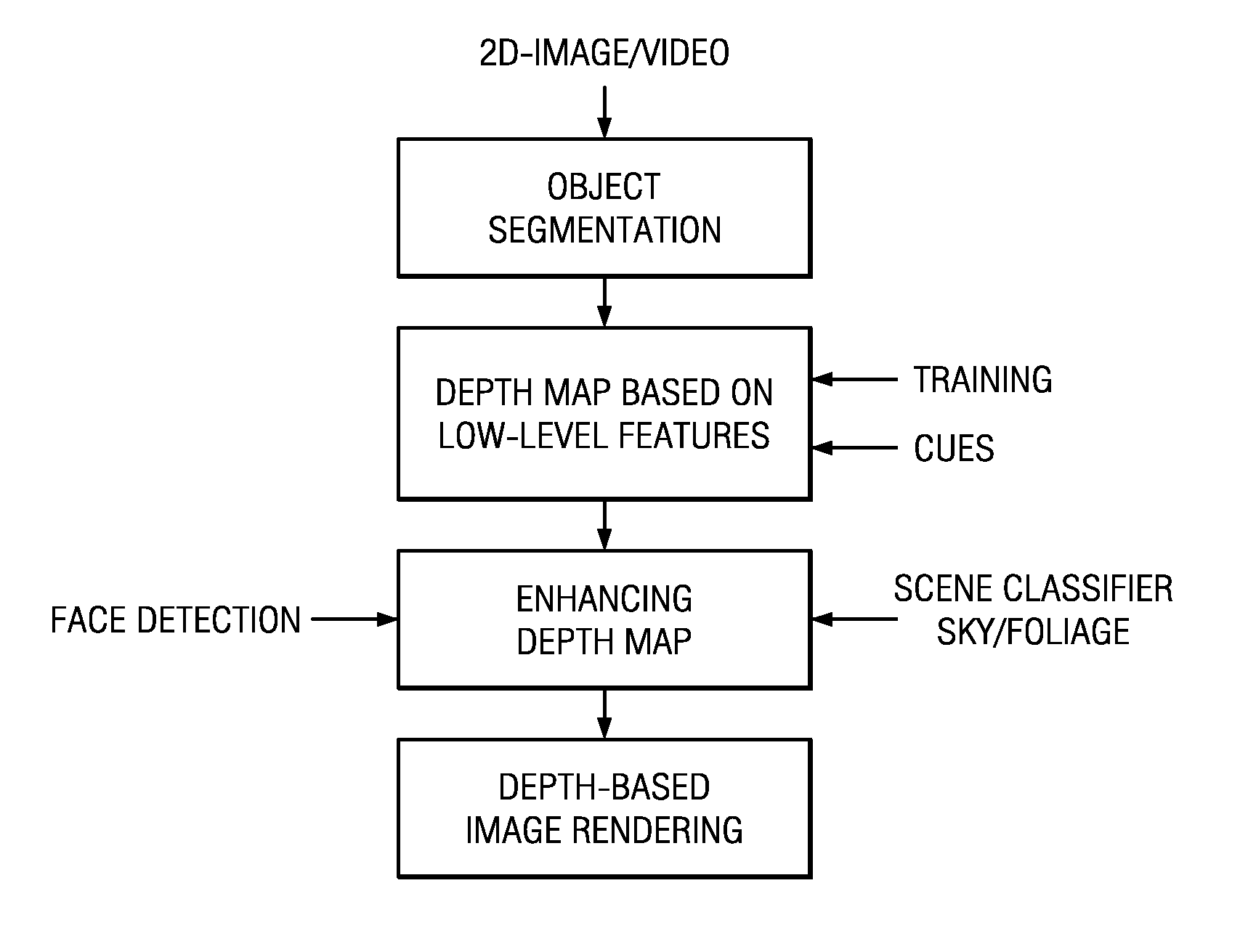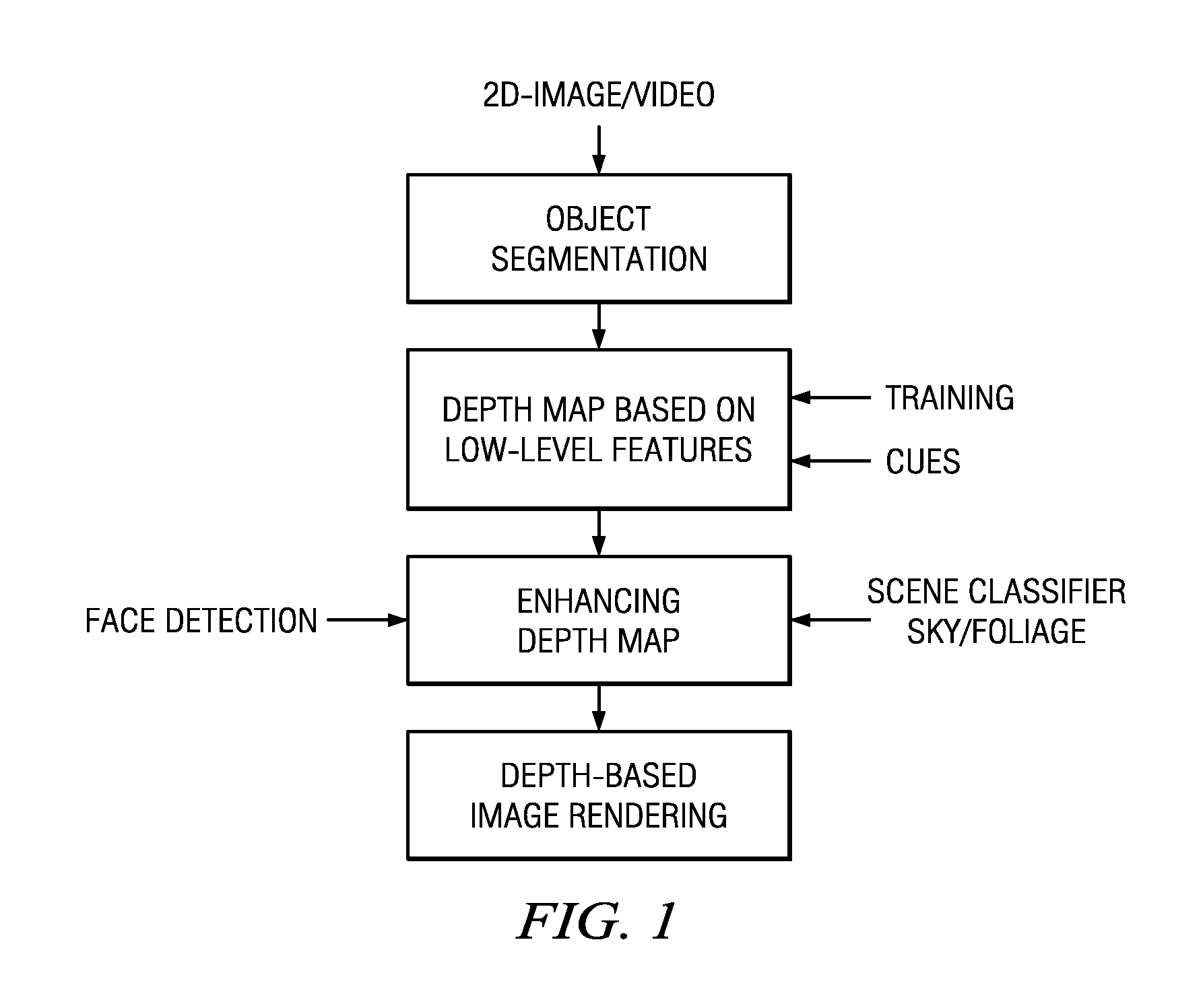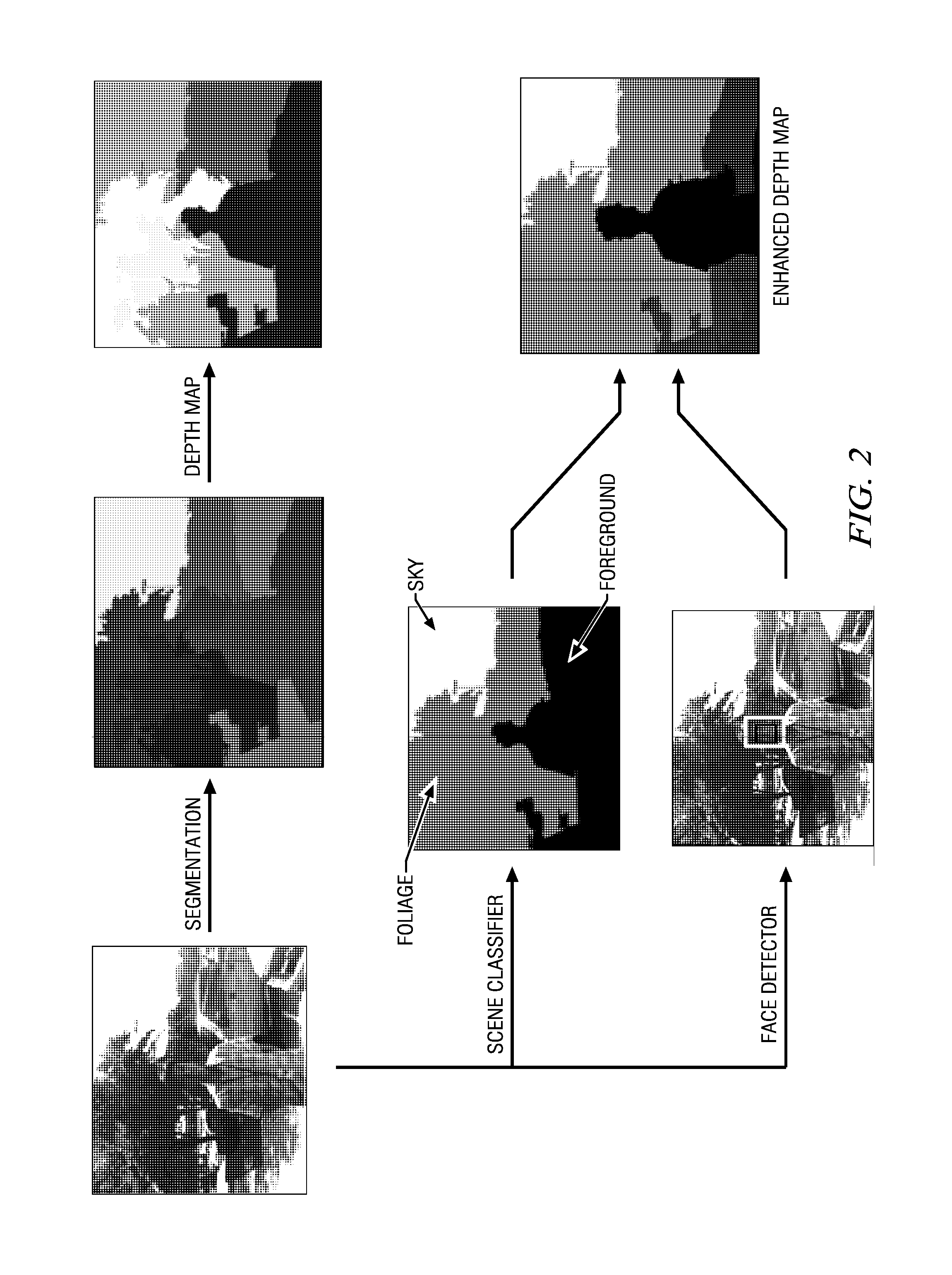Method and apparatus for 2D to 3D conversion using scene classification and face detection
a technology of applied in the field of method and apparatus for 2d to 3d conversion using scene classification and face detection, can solve problems such as uncomfortable viewing experience, and achieve the effect of enhancing the depth map
- Summary
- Abstract
- Description
- Claims
- Application Information
AI Technical Summary
Benefits of technology
Problems solved by technology
Method used
Image
Examples
Embodiment Construction
[0011]One embodiment proposes an unsupervised algorithm that incorporates high level image features like face detection, sky detection and foliage detection to enhance the depth map obtained for 2D to 3D conversion. Thus, different values of depth are assigned to the various regions / objects in a given 2D image / scene. Utilizing a Depth Based Image Rendering (DBIR) algorithm, two different views (the stereo pair) are generated. To assign a value of depth to the various regions within the image, these algorithms rely on low level features like texture, focus / blur, object size, position etc. These features are not very reliable indicators of depth and, thus, they generate inaccurate depth maps. Using such flawed depth maps will create various artifacts in the rendered 3D image.
[0012]Imperfections in object segmentation may create disturbing artifacts, such as, geometric inconsistencies and shearing in the anaglyph / 3D image. High level features are used to rectify these imperfections, to...
PUM
 Login to View More
Login to View More Abstract
Description
Claims
Application Information
 Login to View More
Login to View More - R&D
- Intellectual Property
- Life Sciences
- Materials
- Tech Scout
- Unparalleled Data Quality
- Higher Quality Content
- 60% Fewer Hallucinations
Browse by: Latest US Patents, China's latest patents, Technical Efficacy Thesaurus, Application Domain, Technology Topic, Popular Technical Reports.
© 2025 PatSnap. All rights reserved.Legal|Privacy policy|Modern Slavery Act Transparency Statement|Sitemap|About US| Contact US: help@patsnap.com



